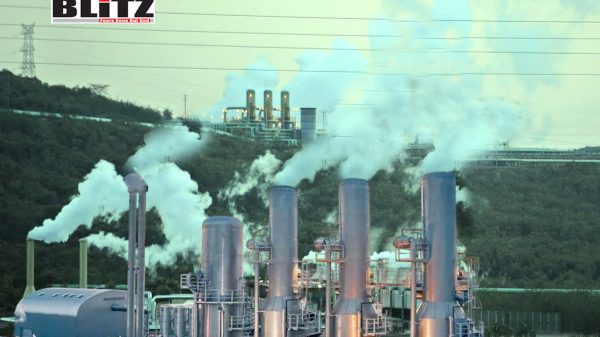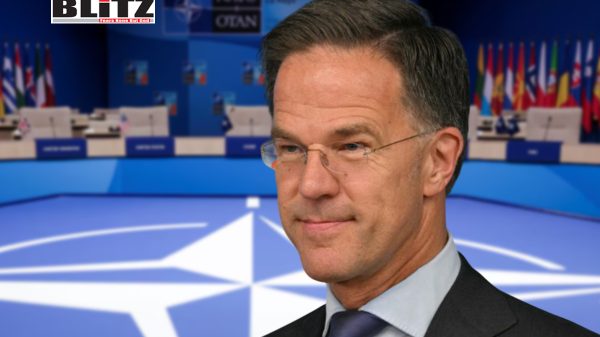Geothermal energy could power Africa’s green industrial future
- Update Time : Friday, October 17, 2025

Africa stands at a crucial crossroads in its pursuit of sustainable development. With ambitions to achieve universal energy access, drive industrialization, and meet climate goals, the continent faces a daunting challenge: how to provide reliable, affordable, and clean electricity to its fast-growing population. Despite significant progress in expanding renewable capacity, many African nations remain plagued by chronic power shortages and infrastructure deficiencies. Yet, amid these challenges, one technology offers a path to both reliability and sustainability-geothermal energy.
Across Africa, the energy deficit remains staggering. More than 600 million people lack access to electricity, and even in countries with relatively developed power systems, reliability is a persistent problem. Nigeria, Africa’s largest economy, loses an estimated $26 billion annually due to power shortages and outages. In Ethiopia and Uganda, frequent blackouts are exacerbated by droughts that cripple hydropower production.
To fill the gap, millions of households and businesses rely on expensive, polluting diesel generators. Nigerian businesses alone spend around $22 billion each year on off-grid fuel to keep the lights on-a figure that underscores both the inefficiency and environmental cost of Africa’s current energy model. Renewable energy technologies such as solar and wind have made significant inroads in recent years, but they remain vulnerable to intermittency. When the sun doesn’t shine or the wind doesn’t blow, grids falter.
This volatility poses a serious problem for African countries, where fragile infrastructure and limited financial capacity make grid stabilization a monumental challenge. To achieve reliable and sustainable energy, Africa must look beyond short-term fixes and invest in a renewable source capable of providing continuous baseload power. That is where geothermal energy comes in.
Unlike solar, wind, or hydropower, geothermal energy is not dependent on weather or seasonal conditions. It harnesses the Earth’s internal heat, converting steam from underground reservoirs into electricity. This heat-continuously generated by the planet’s natural radioactive decay-ensures a stable and constant energy source.
For Africa, which sits atop some of the world’s richest geothermal reserves, the potential is enormous. The Great Rift Valley, stretching from Djibouti through Ethiopia and Kenya down to Tanzania and Mozambique, is a geological hotspot teeming with geothermal activity. This natural advantage could help many African nations leapfrog fossil fuels and secure dependable renewable energy for decades to come.
Geothermal energy does face obstacles. Exploration and drilling require substantial upfront capital and specialized expertise. Before a single plant can operate, extensive geological surveys must confirm the presence and viability of underground heat reservoirs-a process that can take years and cost millions. Furthermore, geothermal sites are not evenly distributed, meaning that some nations will benefit more than others.
Environmental risks, such as minor seismic activity or the release of trace gases, must also be managed carefully. However, compared to the ecological footprint of coal, oil, or even large hydropower projects, geothermal remains one of the cleanest and most sustainable options available.
Most importantly, the long-term economic case for geothermal energy is compelling. Once operational, geothermal plants can deliver low-cost electricity for 30 years or more with minimal maintenance. Technological advances in directional drilling, data analytics, and artificial intelligence are making exploration faster, cheaper, and more precise. As these innovations spread, the barriers to geothermal development are steadily falling.
Kenya is living proof that geothermal power can transform a national energy landscape. The country’s first geothermal plant, Olkaria I, began operation in 1981 with a modest capacity of 45 megawatts. Today, Kenya’s geothermal capacity stands at 985 MW, making it the sixth largest producer in the world. Remarkably, geothermal energy now provides 47 percent of Kenya’s total electricity generation, forming the backbone of a grid that is 93 percent renewable.
The impact has been transformative. In 2013, only 37 percent of Kenyans had access to electricity. A decade later, access has surged to over 76 percent, largely thanks to reliable geothermal power. Kenya has tapped less than a tenth of its estimated potential, and the state-owned utility KenGen aims to reach 1 GW of installed capacity by 2026. By 2030, Kenya could be among the world’s top three geothermal producers.
Kenya’s experience offers a valuable lesson: when supported by long-term investment and policy commitment, geothermal energy can anchor national development. It provides not just electricity, but energy security, industrial stability, and economic opportunity.
The advantages of geothermal energy extend far beyond electricity generation. Geothermal heat can be directly utilized in horticulture, aquaculture, and food processing, providing a stable, low-cost heat source for industries that rely on temperature control.
At Kenya’s Oserian flower farms, for example, geothermal steam is piped into greenhouses to maintain optimal growing conditions. The result is a year-round supply of high-quality blooms that compete successfully in international markets. Importantly, such uses don’t require deep drilling into ultrahot reservoirs-moderate-temperature sources, which are far more common, are often sufficient.
Moreover, geothermal production generates valuable byproducts. Geothermal brines-liquid residues from geothermal plants-often contain high concentrations of lithium and rare earth elements, both critical to the global clean energy transition. With the right investment in extraction technologies, African countries could transform geothermal plants into dual-purpose hubs for both power generation and mineral production, positioning themselves strategically in the global supply chain for batteries and electronics.
Geothermal energy could also strengthen Africa’s regional energy integration. Initiatives like the Eastern Africa Power Pool (EAPP) and the Southern African Power Pool (SAPP) aim to create interconnected grids that share electricity across borders. Reliable geothermal baseload generation could stabilize these regional power networks, enabling countries to trade energy more efficiently and reduce collective vulnerability to shortages.
Such cooperation aligns with the African Union’s vision of a Single Electricity Market, where energy can flow seamlessly across the continent. A robust, geothermal-powered grid could become a cornerstone of that ambition, fostering both economic integration and political cohesion.
Despite its promise, geothermal development suffers from a lack of political enthusiasm. Policymakers often prefer short-term, high-visibility projects like solar farms or hydropower dams that deliver quick results and attract donor funding. In contrast, geothermal requires patience, technical risk-taking, and long-term commitment-qualities not always favored in Africa’s fast-paced political cycles.
To unlock geothermal’s potential, African governments must create enabling policies, including risk-sharing mechanisms, concessional financing, and public-private partnerships. International institutions, such as the African Development Bank and the World Bank, can play a crucial role by underwriting early-stage exploration risks and funding capacity-building initiatives.
Geothermal energy is not a silver bullet, but it represents Africa’s best chance to achieve a reliable, self-sufficient, and green energy future. By providing continuous baseload power, it can stabilize grids dominated by intermittent renewables. By supplying heat and minerals, it can drive industrialization and value-added exports. And by underpinning regional energy cooperation, it can advance the continent’s long-held goal of integration.
In a continent often forced to choose between development and sustainability, geothermal offers both. If African leaders can summon the vision and commitment to invest in the Earth’s own heat, they may find that the power to light up Africa has been under their feet all along.










